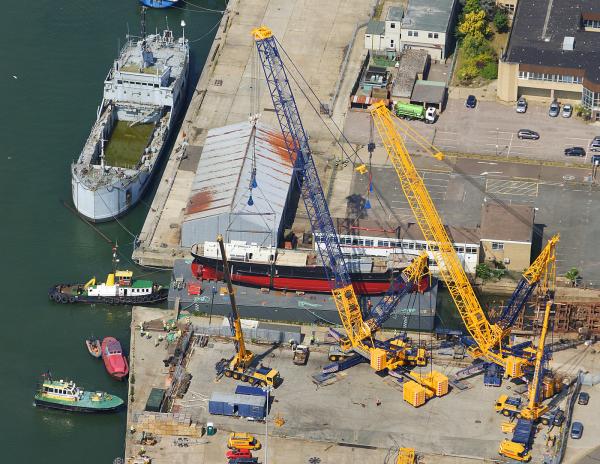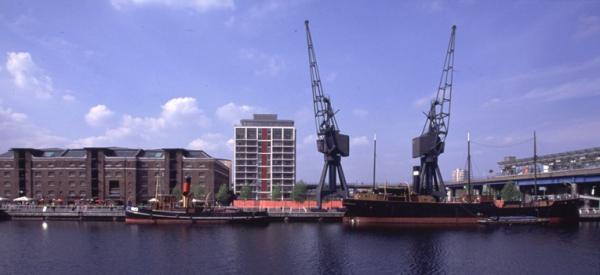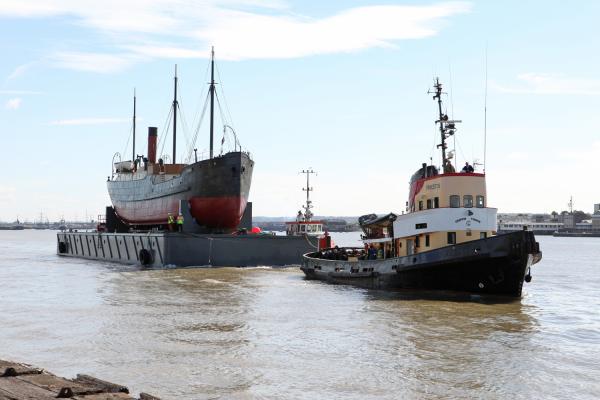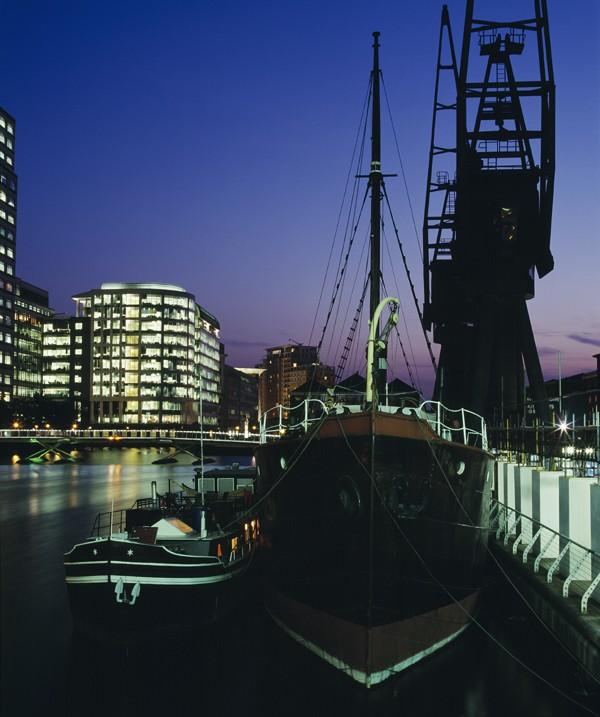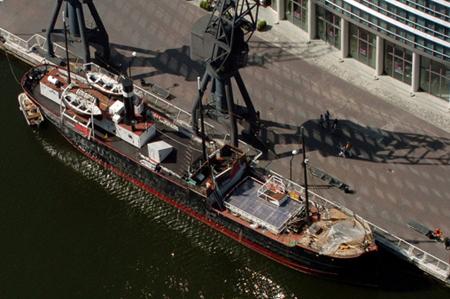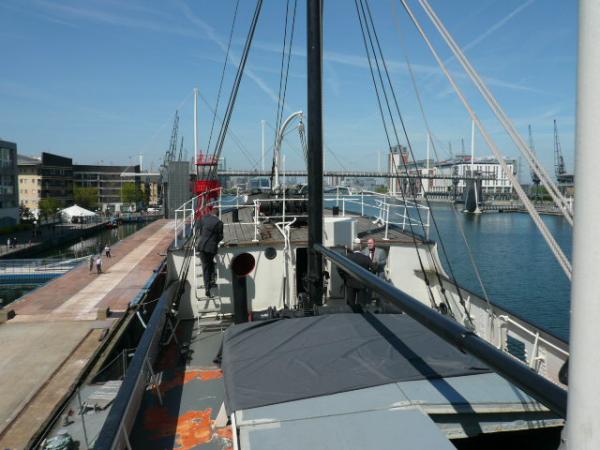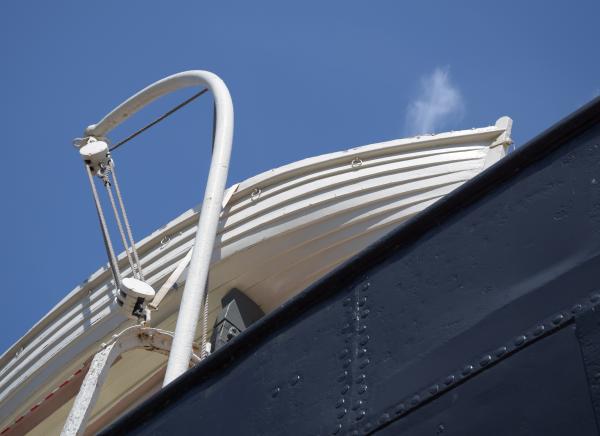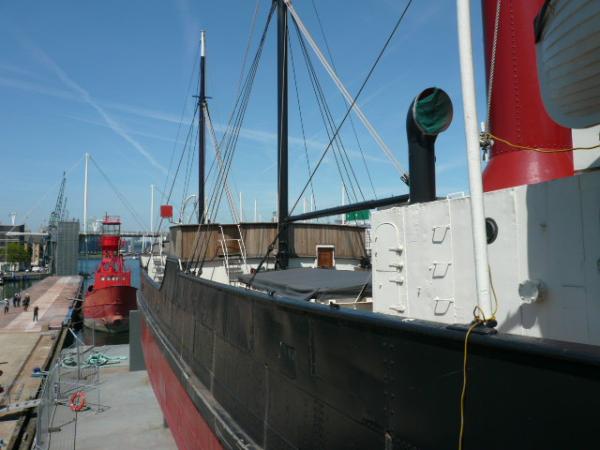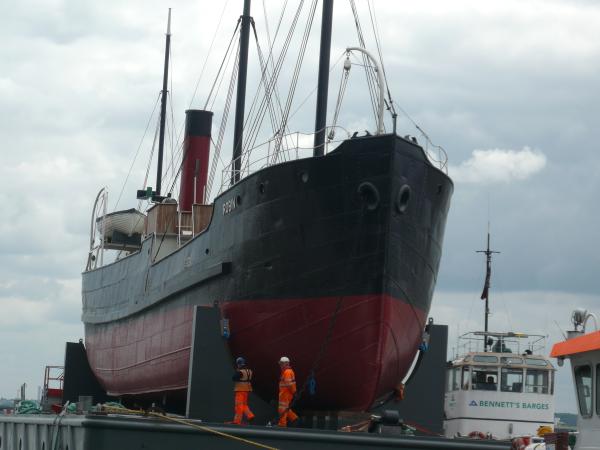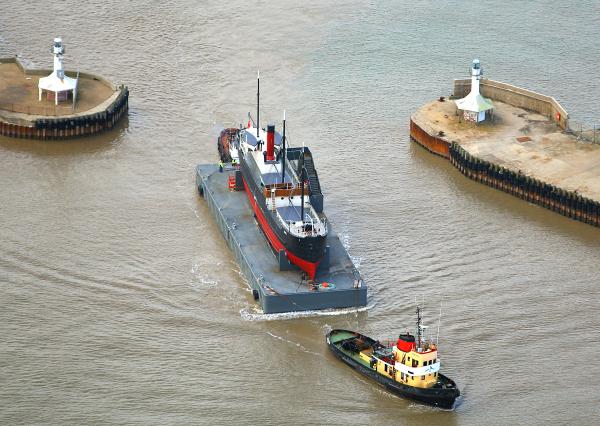

Previous names
- 1900 - 1974 Maria
Details
Construction
Dimensions
History
ROBIN was built by Mackenzie, MacAlipine & Co. in Orchard House Yard, Bow Creek, in East London, who had received an order for two identical coasters from Robert Thomson, a London ship owner. The keels were laid in December 1889 and ROBIN was launched on 16 September 1890 (her sister ship, ROOK, was launched in the previous month). She was fitted out in the East India Docks and moved in October to Dundee in Scotland to have her triple-expansion engine, boiler and auxiliary machinery fitted by Gourlay Bros.
On her maiden voyage, which started from Liverpool on 20 December 1890, ROBIN steamed further than on any other voyage in the next ten years, reaching the port of Bayonne on France's Atlantic coast. She continued to trade around the south and west coasts of England, the Thames and Medway, and to France's channel coast. Her ownership in the first two years was complicated, as shares were transferred between various part-owners, but Arthur Ponsonby of Newport, Monmouthshire, was apparently the main owner.
She was bought in 1892 by Alexander Blackwater to form the Robin Steamship Company; trading between Britain, Ireland and the continental ports, she carried cargoes including grain, iron ore, scrap steel, pit props, china clay, railway steel, general cargoes of casked and baled goods, and granite blocks for the Caledonian Canal. In her first decade of service, she visited 140 ports.
In May 1900, she was sold to Blanco Hermanos y Cia, of Bilbao, Spain, the beginning of seventy-four years under the Spanish flag, under the name MARIA. Her ownership passed to Hijos de Angel Perez y Cia, of Santander, in 1913 and to Eduardo de la Sota Poveda, of Bilbao, in 1965. She traded around the Spanish coast with cargoes such as coal and scrap iron.
During the First World War, she carried pig iron for the French government from the foundry at Santiago to Bayonne and Burdeos under French naval escort. Her appearance remained little changed for many years until, in a 1966 refit, her coal-fired boiler was converted to oil, the stern whaleback and the mizzen mast were taken out, the foremast, main mast and funnel were shortened, and the forecastle was extended. In May 1974, she was purchased by the Maritime Trust and, in June, steamed under her own power to St Katharine Docks, London. She was restored at Rochester, renamed ROBIN, and opened to the public as part of the trust's collection of ships, which at that time were berthed in St Katharine Dock.
In 1991, she moved to West India Quay and was subsequently bought by, what is now, the SS Robin Trust. New restoration work began in March 2002, and she was equipped as an innovative education centre with a successful photographic gallery. In June 2008, a £1.9m funding package was raised from Crossrail by Kampfner Development Consultancy and an extensive programme of conservation work began. SS Robin made her first sea journey for 35 years when she was carefully towed from her berth in London's West India Dock to a slipway in Lowestoft, Suffolk.
She was extensively restored under the guidance and management of KDC, who conducted an extensive appraisal of costs and conservation options, arriving at a unique and radical solution to the combined challenges of a fixed budget and the tender condition of the vessel's riveted hull. In order to preserve and display her original riveted fabric, the vessel was lifted onto a purpose-built floating pontoon, commissioned and built in Poland, in a dramatic and successful crane operation in June 2010.
Now restored to her former glory, she has returned to the Victoria-Albert docks in London, where fundraising and fit-out works for a future training centre and museum are being carried out.
Update, May 2023: Plans have been submitted to see SS ROBIN relocated with her pontoon from KGV dock to Trinity Buoy Wharf where she will have a floating mooring fixed between two piles with walkway allowing public access.
Significance
Recalling Masefield’s poem ‘Cargoes’, ROBIN is the last surviving “dirty British coaster”. Whilst ROBIN is the sole surviving British-built steam coaster, of classic long raised quarter-deck design, it could be argued that her significance is far greater. No other British cargo steamer of considerably larger proportions, whether Cardiff tramp or Liverpool cargo liner has survived, and so, with her riveted hull and triple expansion steam propulsion, she is the sole remaining representative of all those cargo steamers that made up the vast bulk of the British merchant fleet at its apogee.
Key dates
-
1890
Built by Mackenzie, McAlpine & Co. in Orchard House Yard, Bow Creek, East London for Mr Robert Thomson, a London ship owner
-
1890
Steamed further on her maiden voyage than on any other in the next ten years, reaching the port of Bayonne
-
1892
Bought by Alexander Blackwater to form the Robin Steamship Company
-
1892-1900
Carried cargoes including grain, iron ore, scrap steel, pit props, china clay, railway steel, general cargoes of casked and baled goods, and granite blocks for the Caledonian Canal
-
1900
Sold to Blanco Hermanos y Cia, of Bilbao, Spain and renamed MARIA
-
1913
Bought by Hijos de Angel Perez y Cia, of Santander
-
1914-1918
Carried pig iron for the French government from the foundry at Santiago to Bayonne and Burdeos under French naval escort
-
1918-1965
Continued as a coastal freighter
-
1965
Sold to Eduardo de la Sota Poveda, of Bilbao
-
1965-1974
Traded around the Spanish coast with cargoes including coal and scrap iron
-
1966
Coal-fired boiler converted to oil, the stern whaleback and the mizzen mast taken out, the foremast, main mast and funnel shortened and the forecastle extended
-
1974
Purchased by the Maritime Trust and steamed under own power to St Katharine Docks, London
-
1991
Moved to West India Quay and bought by the SS Robin Trust
-
2002
New restoration work began for use as an education centre
-
2008
A £1.9m funding package raised from Crossrail and an extensive programme of conservation began
-
2010
Lifted onto a purpose-built floating pontoon for long-term preservation
-
2010
Returned to Port of Tilbury
-
2011
Permanently moored at Royal Victoria Docks, London
Grants
-
9 December 2015
£95,500 awarded to the SS Robin Trust from the Heritage Lottery Fund towards the cost of transition funding
-
April - June 2010
A Sustainability Grant of £1000 for expert advice was made from the Strategic Development Fund of National Historic Ships
-
2009/10
The Heritage Lottery Fund awarded £999,000 for the Open Doors project
-
Financial year April
A Sustainability Grant of £1732 for survey was made from the Strategic Development Fund of National Historic Ships
-
2005/06
The Heritage Lottery Fund awarded £39,7000 for a complete survey
Sources
Waine, C V & Fenton, R S, Steam Coasters and Short Sea Traders, pp49, 149, 163, Edition 3, 1994
Own this vessel?
If you are the owner of this vessel and would like to provide more details or updated information, please contact info@nationalhistoricships.org.uk

